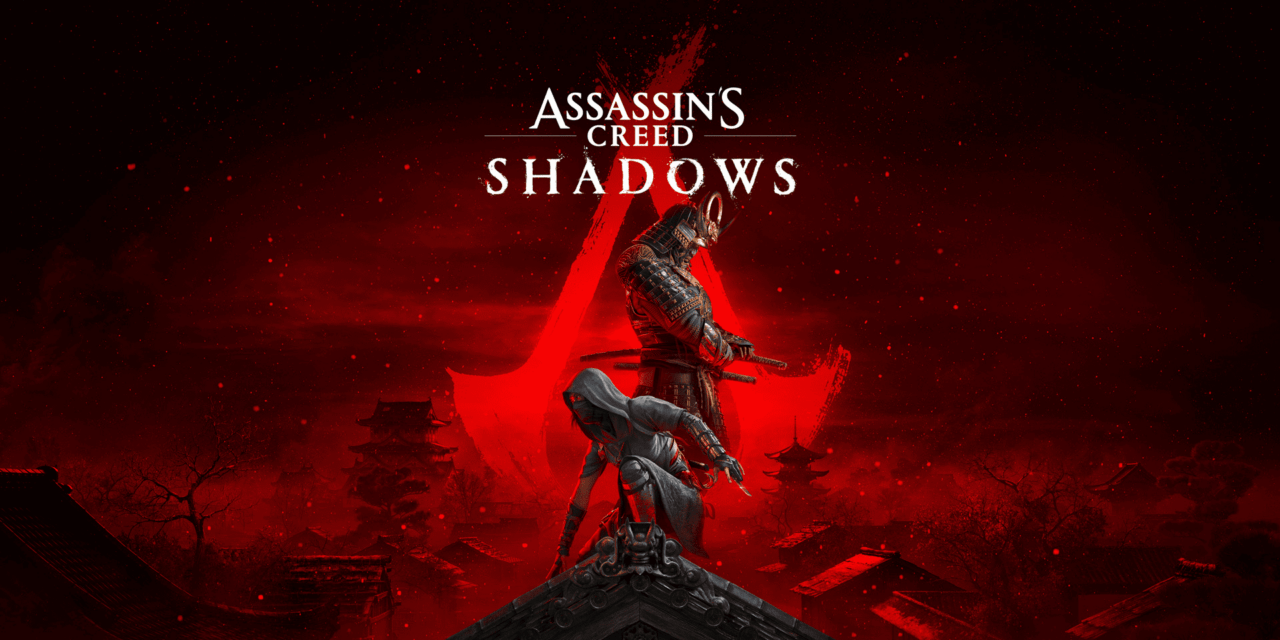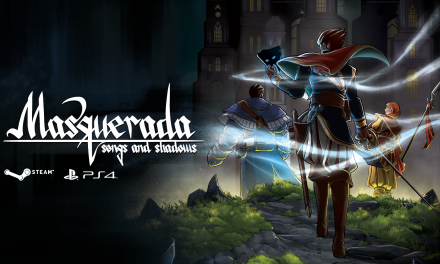The Hidden Blade strikes again!
From developer Ubisoft comes Assassins Creed: Shadows, the latest instalment of the stealthy action game series. Taking place this time in the 16th century in long awaited Japan, you get to play as both the the shinobi (ninja) Naoe and the samurai Yasuke.
The game begins by introducing you to Yasuke, a former enslaved bodyguard to Portuguese missionaries who ends up in the service of Lord Nobunaga. Six months later Yasuke takes part in an assault on the village of Iga as one of Lord Nobunaga’s samurai warriors. After a taste of combat the game goes back in time a short distance before the battle and introduces you to Naoe, a young shinobi who is training with her father. When the battle begins, Naoe’s father tasks her with finding and protecting a box that the Igan’s have been protecting for a long time, but just as she reaches it, a masked warrior attacks her and steals the box. Naoe chases after him but is injured in the pursuit, then has to watch as her father tries to protect her and is murdered by a shadowy group of masked individuals called the Shinbakufu, or as Naoe refers to them The Onyro. These are the main antagonists and your assassination targets in Naoe’s quest to retrieve the box and avenge her father.
The main story thus begins. Once Naoe has healed and established a hideout, she learns of the locations of two of the Shinbakufu and sets out to serve a cold dish of revenge. The story’s structure reminded me heavily in the beginning of Assassins Creed: Origins, including the motive for Naoe becoming an assassin and the forming of the group of the Hidden Blade against the Onyro. While Assassins Creed: Shadows follows a similar path, Naoe and Yasuke’s own stories and characters are very different.
The first act of the game is played exclusively as Naoe, and only once you have progressed far enough into the main story will you unlock Yasuke. If you play nothing but the main story this will not take too long, but if you are easily distracted with side quests, exploring and the many small activities you can find along the way, then it may take some time.
Once Yasuke is unlocked as a playable character though you will be able to freely swap between playing as him or Naoe.
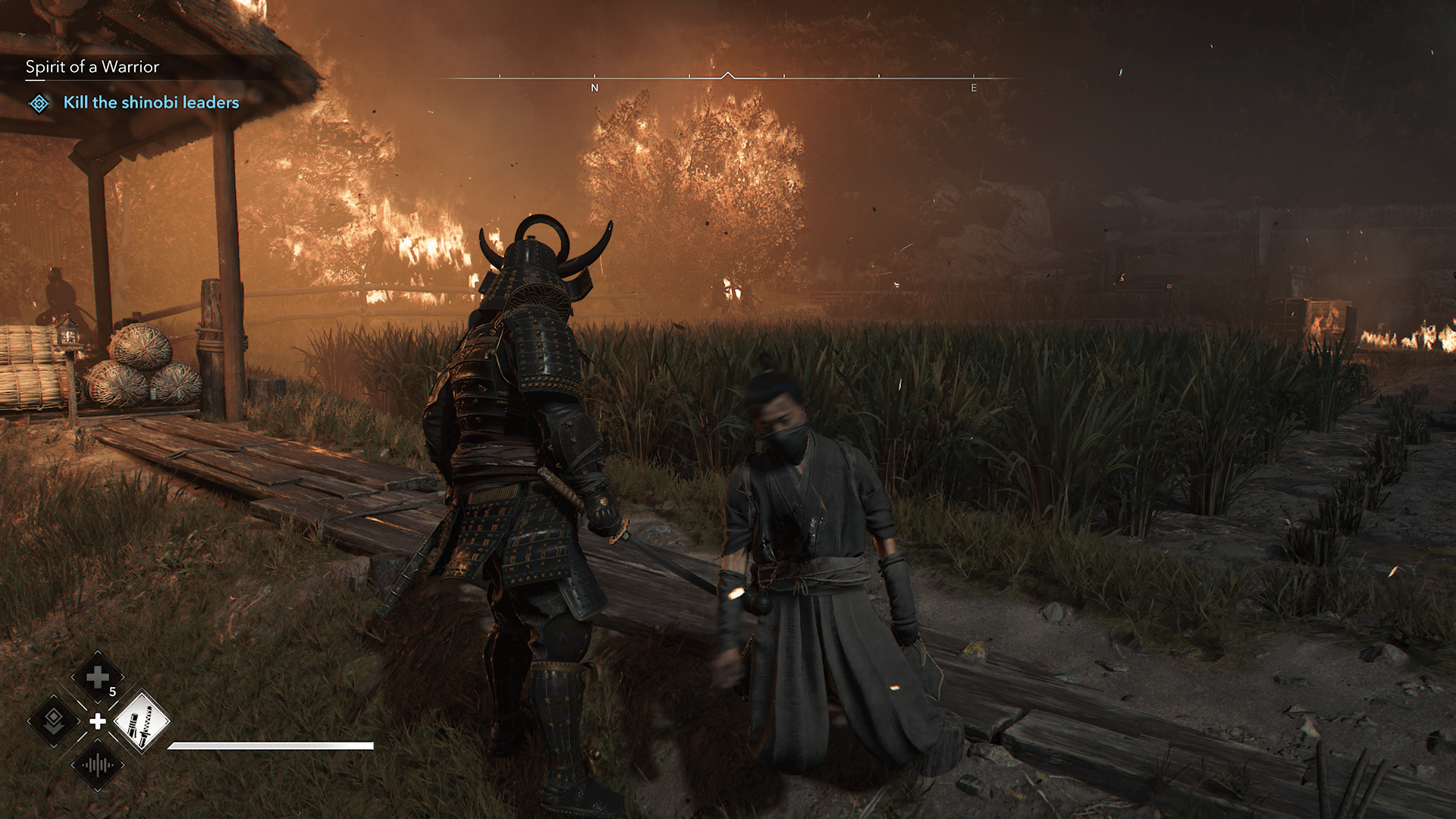
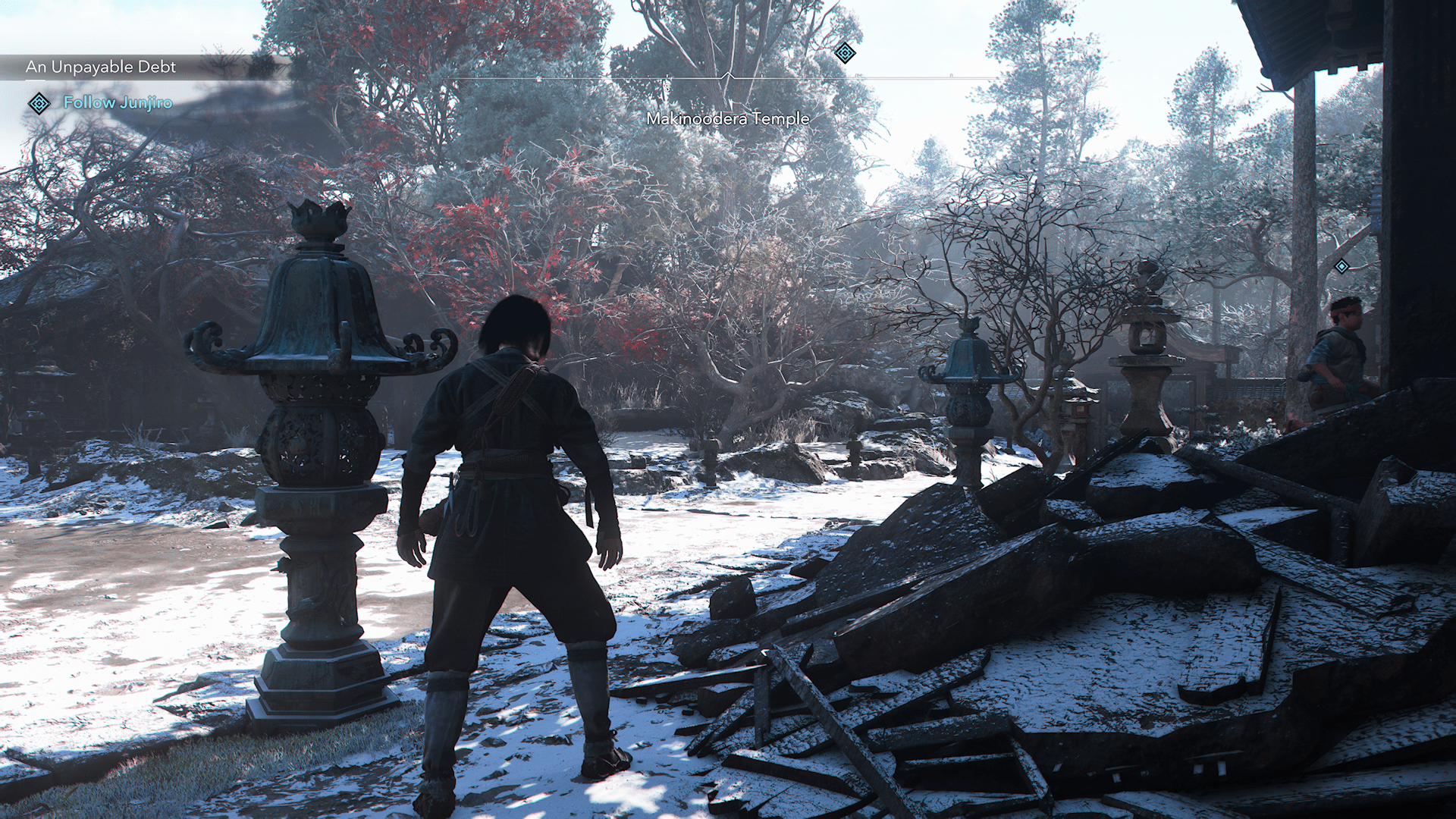
Swapping between them is sometimes necessary as not only do their play styles greatly differ, but you will sometimes encounter activities that only one of them can do. Naoe is lightly armoured and more agile, both in combat and in scaling buildings. She dodge’s further and can climb much easier, especially with the addition of her grappling hook, though she also takes more damage when hit than Yasuke does in his heavy armour. Naoe’s weapons, though far from insignificant, are also less powerful than Yasuke’s, but she has the benefit of the hidden blade and the ability to throw Kunai blades silently. Yasuke on the other hand is the complete opposite, his weapons are more powerful, yet a little slower, he can use either a bow or a teppo (gunpowder weapon) and his climbing ability is much more limited. Yasuke also has more rations to heal himself with and his armour causes him to take less damage, if you are anticipating fighting a big group or a boss you may want to use him.
Personally I preferred playing as Naoe most of the time, but Yasuke can be a nice change. The only weapon that they have in common is a katana (though Yasuke’s is a larger variant), Naoe can use a kusarigama which is a sickle bladed weapon on a chain and a short bladed tanto and her hidden blade for quick attacks. Yasuke can use a naginata which is a bladed polearm and quite powerful, a kanabo which is a large and powerful club type weapon and the two ranged weapons I mentioned earlier.
All these weapons have their own skill tree for each character and abilities connected to them, as well as one for Naoe’s tools, yet upgrading them is a little different in this game. Before you can progress to any level beyond the first, you must first increase your knowledge rank. You do this by completing activities out in the world to gain knowledge points, a common one is exploring temples and finding all of the lost pages, though there are many others. In the mastery tab of the pause menu there is a knowledge meter which shows you how many points you need to advance to the next rank, don’t worry though, this is shared between the two characters.
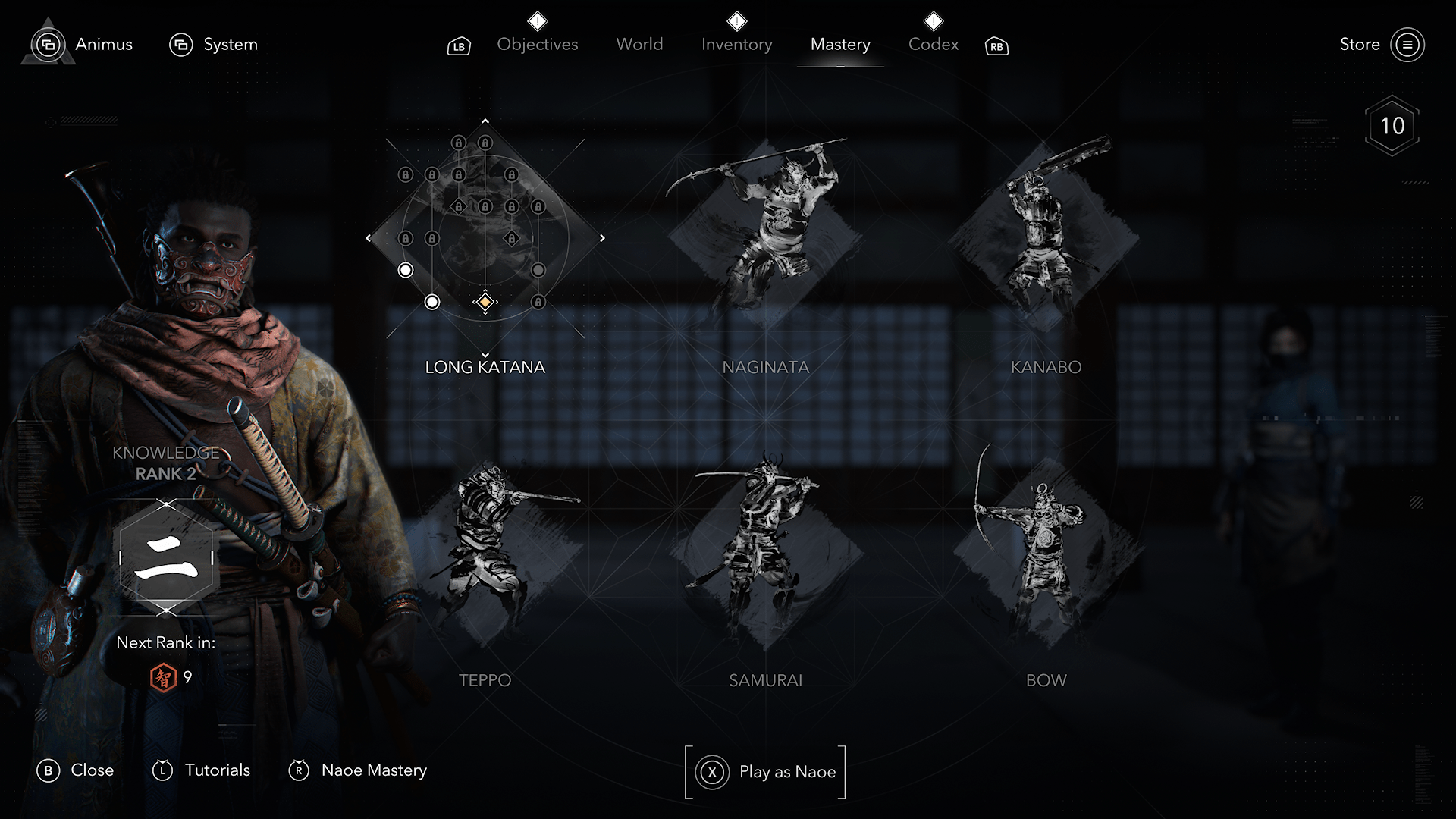
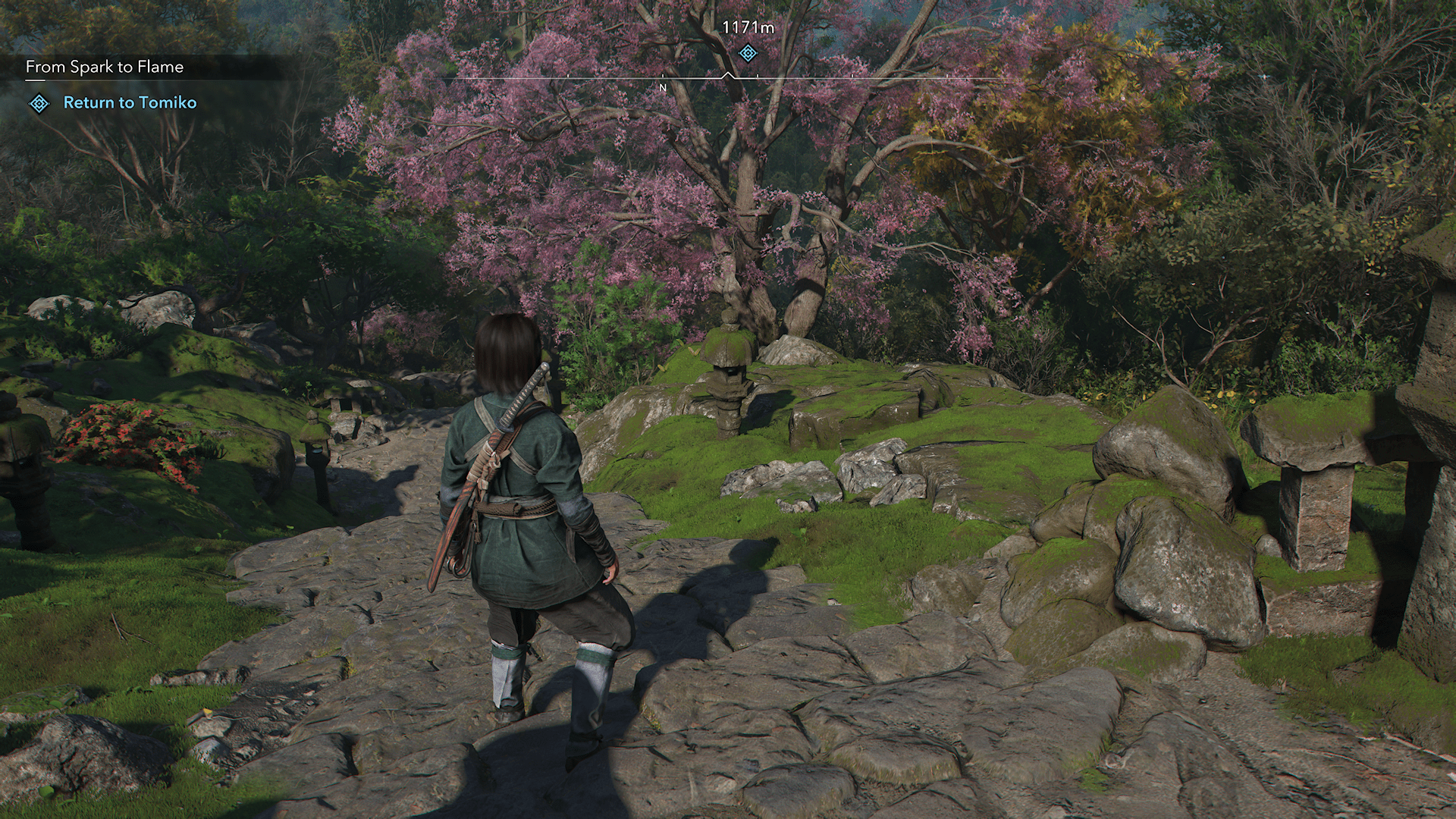
A returning feature that I was glad to see is the ability to change the look of your armour and weapons, so you can wear and use the most powerful things you find but still choose your preferred look. This feature will not be available straight away, neither will the ability to engrave items to give them attributes such as poisoning the enemy on a successful counter.
Combat feels a little more difficult in this game, especially when fighting groups of enemies, as you seem to take a lot more damage even from the regular enemies. This doesn’t take long to get used to and adds a bit more realism to the game. A real katana is incredibly sharp, so much so that there is a specific way to sheathe and unsheathe it to avoid cutting through the wooden scabbard (the saya) or the wielders own hands.
Of course you do just as much damage with your own katana, but with many enemies you will have to break through their armour first. You can wear their armour down with light attacks but the quicker and more risky way is to hold the heavy attack button to hit them with a devastating blow when you release it, but this can leave you vulnerable.
Stealth is obviously the far safer way of dispatching your enemies, and it works the same as always except for a few welcome additions. You can now go prone and crawl under buildings or through short grass, such a minor addition but something I really liked. Environments are far more destructible than they have been before, including the very bushes you hide in, enemies will sometimes cut at them if they are looking for you and you can cut them yourself if you are fighting in them. The iconic Shōji paper doors can be cut easily, and one of Naoe’s early katana abilities is to assassinate someone through the door if they are near it.
You can also extinguish lights as you move to give yourself the cover of darkness and literally hide in the shadows.
Throughout the game you will have certain dialogue choices to make which affect how people feel about you, some are minor such as choosing to lie to a noodle merchant about the quality of his cooking or tell him the truth, while others are more important such as choosing to spare an enemy or kill them and can win or lose you allies. There is a settlement building feature, similar to that in Valhalla but with more choice to organise and customise. Instead of buildings having a pre-set spot, you can place them where you like as long as there is room, you can then customise their look inside and out, though you will have few options to pick from in the beginning. You can link buildings together with outside walkways as well as adding decorative items like rocks, trees and paved paths elsewhere in the hideout’s grounds. More items can be obtained as rewards found in chests, by completing missions or bought from merchants. Many buildings are locked until you progress through the story, some of which you gain access to through allies. The buildings all have a purpose, from giving you passive boosts to allowing you to do specific things, such as the forge allowing you to dismantle or engrave items. Resources are needed to build these buildings. They can be found throughout the world, commonly in castles and bandit camps, but you can also buy some resources from merchants. The ability to design the layout of your hideout and customise its buildings is a nice feature that adds a little more flavour than just having them for the bonuses they bring. I thought it really helped to make the Hideout feel like your own.
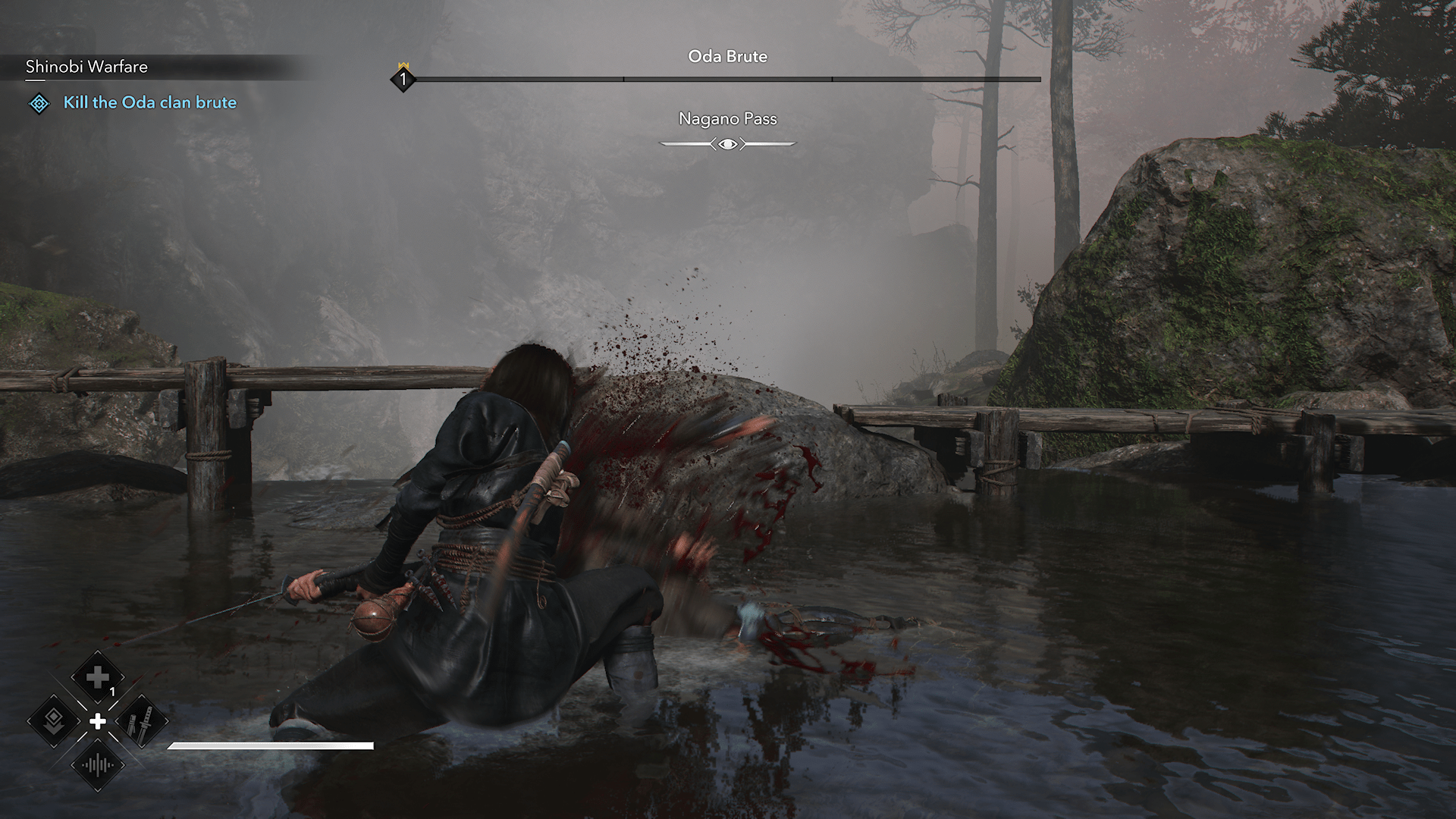
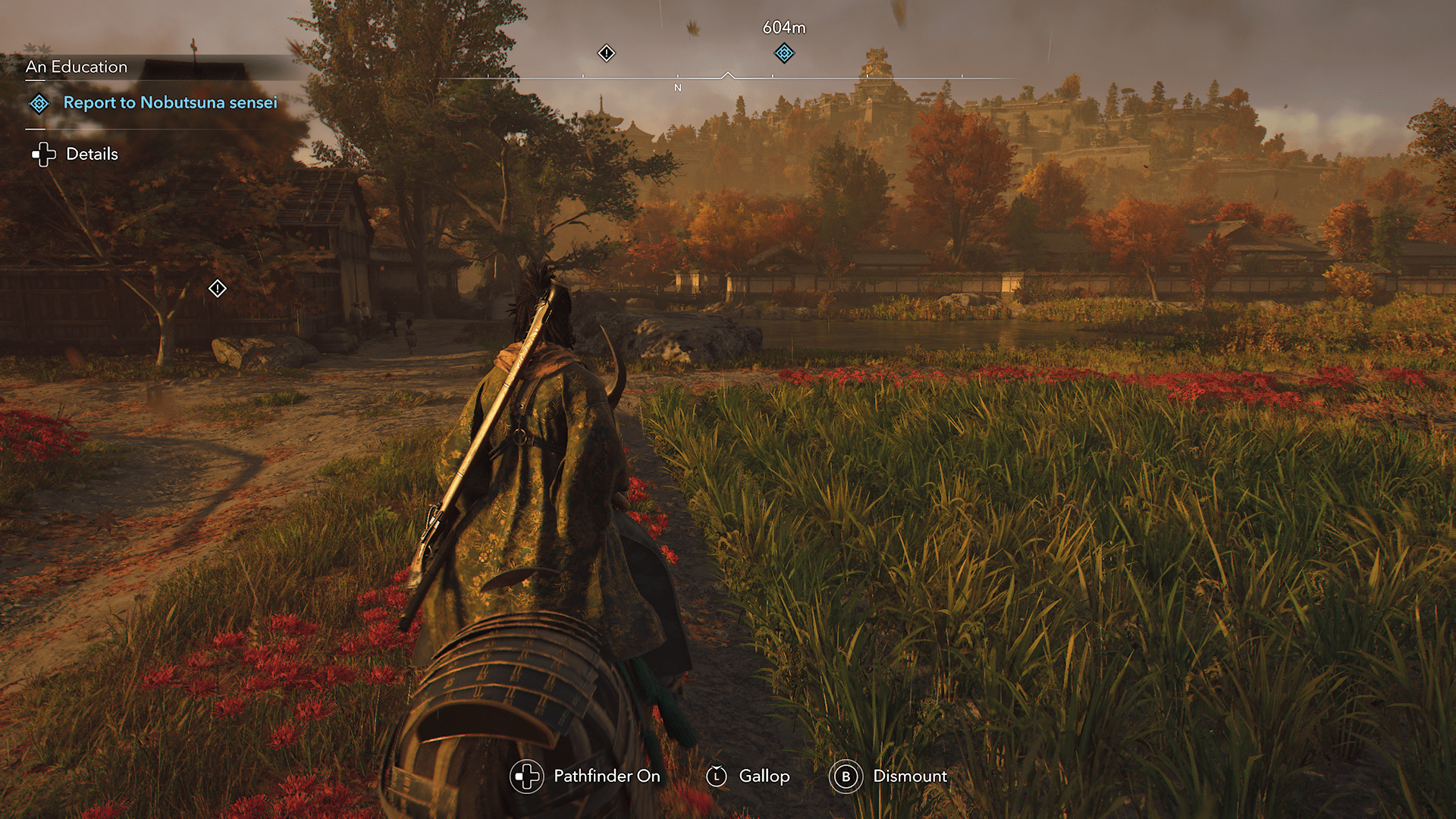
Another way to collect resources is to send out scouts to locations you pick on the world map at your hideout, you gain three scouts when you unlock the hideout, though there are ways to gain more. You can use each scout once per season, yes even the seasons change!
You can also gain a wanted status as you cause trouble throughout the regions of Japan, making your enemies alert in those regions and exploring that much more dangerous for you. You can clear this status by waiting for the season to change or by using your scouts to clear it once you have the sufficient upgrades to your hideout. If you do not wish to do either of these, then swapping characters will allow you to go unnoticed while your enemies are on alert for the other.
The third thing you can do with your scouts is use them to locate targets using the clues to the mission that you would normally follow anyway, this can save a little time but personally I think this is the weakest use you can make of your scouts.
Spending some of your time exploring just to see the sights is entirely worth it. Visually the game is stunning, and one of my new favourite things is that the weather can change, I love to stop and watch as a rain storm hits whenever i’m not dodging blades, bullets and arrows. There are many small activities you can find when exploring between missions and side missions. Praying at shrines will require you to follow a sequence of buttons several times in time to sound bells, the more sequences you complete, the fainter the visual queue will become until you cannot see it and have to rely on your timing skills, another activity allows you to draw pictures of animals you see, you won’t do the actual drawing yourself but you will have to sneak close enough to the animal without spooking it to complete the drawing, once completed you can use them as wall decorations in your hideout.
A review code for Assassins Creed: Shadows for Xbox Series X was provided by Ubisoft. This review is featured on OpenCritic.

